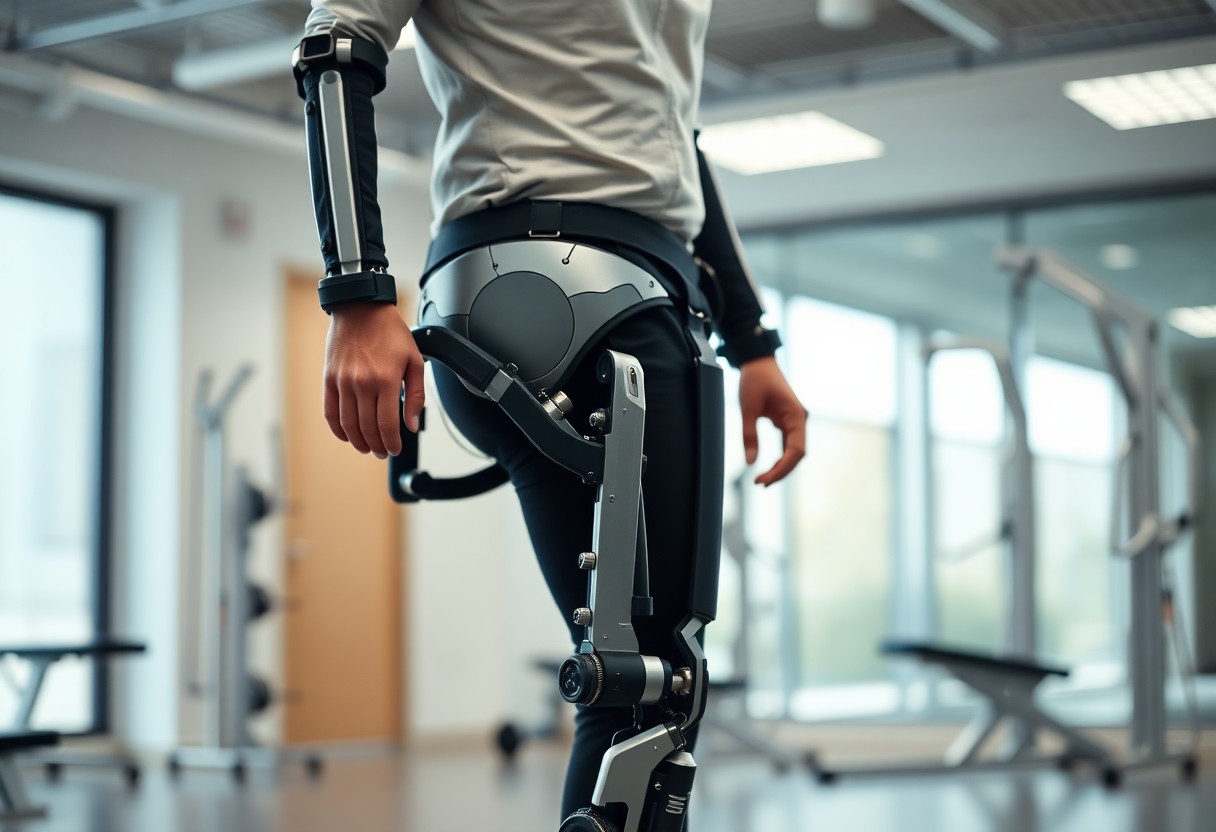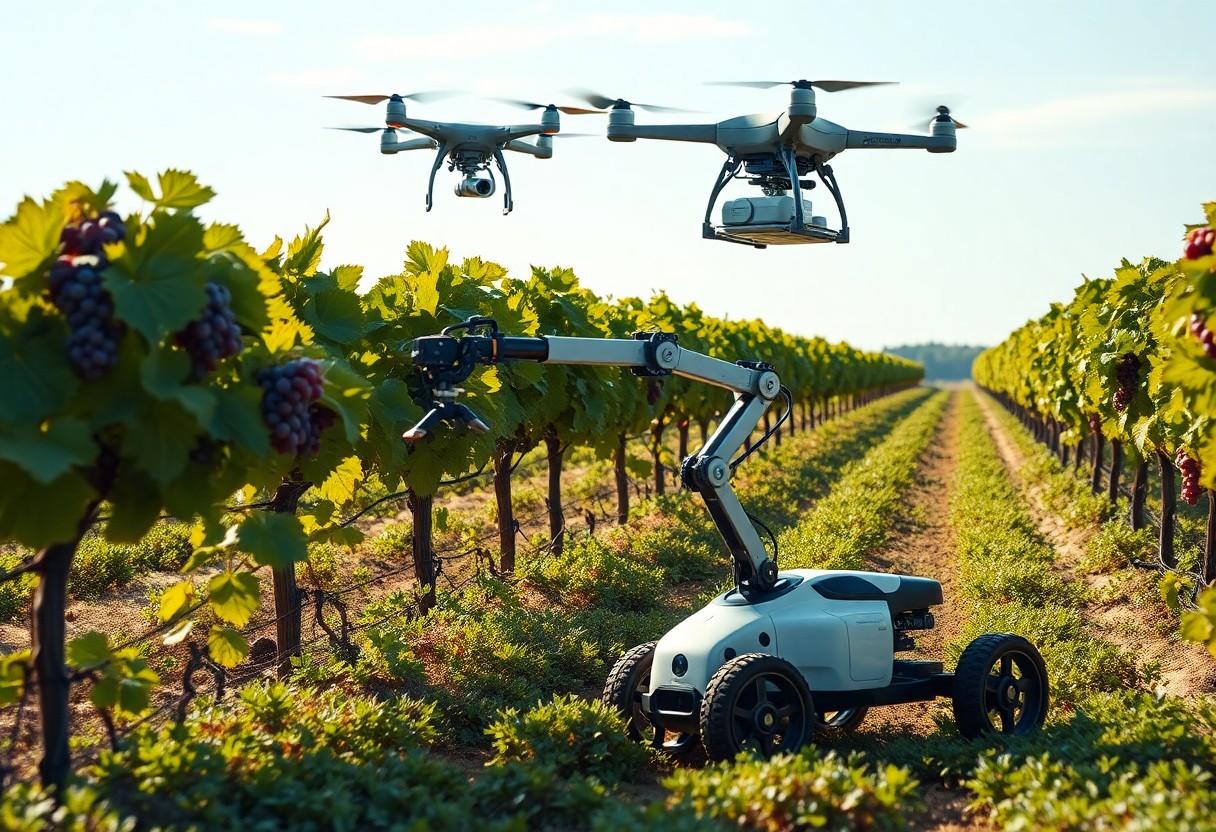Many individuals may not realize that exoskeletons are transforming the landscape of rehabilitation and heavy labor. These advanced wearable robotic suits enhance mobility, support physical tasks, and assist in recovery from injuries. By integrating cutting-edge technology and ergonomic design, exoskeletons empower you to achieve greater strength and efficiency, whether in a medical setting or the workplace. This post explores into the types, benefits, and applications of exoskeletons, providing you with insight into how they can impact your life and work.

Transformative Technologies: The Mechanics of Exoskeletons
Exoskeletons integrate advanced technologies to enhance mobility and support rehabilitation. They consist of frameworks that are worn externally, allowing users to harness the power of mechanical devices while significantly reducing the strain on their muscles and joints. With a combination of sensors and actuators, these systems respond to your movements, amplifying your strength and endurance during various activities.
Components and Functionality
Your exoskeleton is built from various components, including a rigid frame, motors, sensors, and controllers. The frame supports your body, while motors provide the necessary force to facilitate movement. Sensors monitor your position and motions, ensuring that the exoskeleton adjusts in real-time to match your actions, thereby enhancing your natural abilities seamlessly.
Innovations Driving Progress
Recent advancements in exoskeleton technology focus on lightweight materials, intuitive control systems, and improved battery life. Innovations such as soft robotics and AI integration enable more flexible designs and smarter responsive actions. Companies are exploring 3D printing to customize suits for individual needs, which can dramatically enhance user comfort and efficiency.
For example, the development of lightweight materials like carbon fiber not only decreases the burden on users but also boosts durability. Moreover, algorithms that incorporate machine learning allow the exoskeletons to adapt to your walking patterns, improving the accuracy of movement assistance. Progress in compact battery technology promises longer operational periods, making these devices more practical for daily use in both rehabilitation settings and industrial environments. As these technologies evolve, the potential for exoskeletons to transform both personal mobility and workplace safety continues to expand.
The Road to Recovery: How Exoskeletons Enhance Rehabilitation
Exoskeletons are reshaping rehabilitation by offering supportive framework solutions that enable individuals with mobility limitations to regain functionality. These wearable devices assist in various therapeutic exercises, facilitating natural movement patterns that engage muscles and improve strength. As you participate in rehabilitation, the robotic assistance allows for enhanced repetitions, promoting faster recovery and encouraging confidence in mobility.
Applications in Medical Settings
In medical settings, exoskeletons have become invaluable tools for physical therapists and rehabilitation specialists. They are employed in hospitals and rehabilitation centers to aid patients recovering from strokes, spinal cord injuries, and other mobility impairments. By using exoskeletons during therapy sessions, you can experience a structured methodology to improve gait, balance, and overall physical capabilities.
Patient Outcomes and Success Stories
Numerous success stories highlight the efficacy of exoskeletons in rehabilitation. Patients have reported significant improvements in their mobility and independence after consistent use of these devices. For example, individuals who once relied on wheelchairs have regained the ability to walk and perform daily activities with greater ease, demonstrating the profound impact of technology on recovery trajectories.
One remarkable case involved a patient who experienced a spinal cord injury and initially faced significant challenges in rehabilitation. After incorporating an exoskeleton into their therapy regimen, the individual documented a remarkable increase in mobility. Within months, they transitioned from using a wheelchair to walking independently, a testament to the powerful enhancements exoskeletons provide. Such success stories underscore the transformative potential of these devices in achieving meaningful advancements in patient recovery and overall quality of life.
Heavy Lifting Reimagined: The Role of Exoskeletons in Labor
Exoskeletons are transforming heavy labor by enabling workers to lift and transport heavy loads with less strain on their bodies. These wearable robotic suits provide support and assistance, mitigating the risks associated with repetitive lifting and overexertion. As industries adopt this technology, improved productivity and reduced fatigue illustrate the potential of exoskeletons in changing workplace dynamics. For an in-depth overview, refer to Exoskeleton (Robotics) – an overview.
Industrial Applications and Benefits
Industries such as construction, manufacturing, and logistics are embracing exoskeletons to streamline workflows. By integrating these suits, businesses can enhance their operational efficiency, allowing workers to handle materials and perform tasks that would otherwise be physically demanding. This adoption not only boosts productivity but also optimizes the workforce’s capabilities, paving the way for innovative solutions to labor-intensive roles.
Enhancing Worker Safety and Efficiency
Exoskeletons drastically enhance worker safety and efficiency by minimizing the physical toll that heavy lifting can take on the body. With a design that supports your movements, these devices help distribute weight evenly, reducing stress on muscles and joints. Research has shown that users can lift significantly heavier loads without an increased risk of injury. For example, workers equipped with exoskeletons report a decrease in back strain and fatigue, resulting in fewer workplace accidents and higher morale.
Navigating Challenges: Barriers to Adoption in the Market
Several obstacles hinder the widespread adoption of exoskeletons for rehabilitation and heavy labor. High costs, regulatory issues, and technological limitations often prevent organizations from integrating these advanced systems into their operations. While potential benefits are clear, addressing these challenges is necessary for fostering a broader acceptance and utilization of exoskeletons in various sectors.
Cost Implications and Economic Considerations
The financial investment required for exoskeletons can be prohibitive for many organizations. Prices typically range from $40,000 to $100,000, which may deter businesses, particularly smaller ones, from purchasing these devices. Additionally, ongoing maintenance and training expenses can further strain budgets, making cost-effectiveness and return on investment significant factors in decision-making.
Regulatory Hurdles and Technological Limitations
Regulatory standards and technological issues pose challenges to the adoption of exoskeletons. Compliance with safety regulations can slow down the approval processes, limiting access to this innovative technology. Furthermore, many exoskeletons are still in developmental phases, presenting durability and usability issues that need to be resolved before widespread implementation.
Regulatory hurdles often involve navigating complex frameworks that vary by region, affecting how quickly companies can bring exoskeleton products to market. For instance, the FDA has set specific guidelines for medical devices, which can lengthen the approval timeline for rehabilitation exoskeletons. Meanwhile, technologically, many existing models still require improvements in battery life, weight distribution, and user interface design for enhanced usability. These factors can impede not just user acceptance but also overall market growth, necessitating greater collaboration between manufacturers, healthcare professionals, and regulators to push for more streamlined processes and enhanced technology that meet safety and efficiency standards.
Future Horizons: The Potential of Exoskeleton Technology
Exoskeleton technology stands at the precipice of transformation, with ongoing research and development paving the way for advancements in both rehabilitation and heavy labor industries. As capabilities expand, expect enhanced mobility, reduced stress on joints, and faster recovery times in rehabilitation contexts. Technological integration will likely lead to smaller, more adaptable designs that fit into everyday life, allowing for seamless interaction with users during daily tasks, ultimately reshaping work environments and care methods.
Advancements on the Horizon
Innovations in materials and battery efficiency promise lighter, more durable exoskeletons that can operate for extended periods without recharging. You can anticipate the emergence of AI-driven systems that not only assist users physically but also provide real-time feedback to optimize movement and prevent injuries. Collaborative research between tech companies and medical experts is fueling these breakthroughs, making it possible for you to experience a future where exoskeletons are commonplace.
Broader Implications for Society and Economy
The integration of exoskeletons into daily life has the potential to significantly impact labor markets and healthcare systems. As more workers adopt these devices, industries may see increased productivity and reduced injury rates, leading to lower healthcare costs. Additionally, the paradigm shift in how rehabilitation is approached can facilitate quicker workforce reintegration for injured individuals, boosting economic growth and enhancing quality of life.
Economically, the widespread use of exoskeletons could lead to a reduction in long-term disability claims and insurance payouts, saving billions annually. As labor shortages continue in physically demanding jobs, exoskeletons can fill gaps by enabling aging populations to stay in the workforce longer. This shift not only retains valuable experience but also addresses the pressing demands of an aging demographic. Furthermore, incorporating exoskeletons into rehabilitation can streamline recovery processes, fostering a healthier society overall. The potential for significant economic benefits, combined with improved health outcomes, positions exoskeleton technology as a pivotal element in the future landscape of work and well-being.
To wrap up
As a reminder, exoskeletons are transformative technologies that enhance your abilities in rehabilitation and heavy labor. These wearable robotic suits can support your mobility, accelerate recovery from injuries, and alleviate the strain of physically demanding tasks. By integrating advanced robotics into daily life, you can improve efficiency, reduce fatigue, and gain greater independence. The future of exoskeletons holds great promise for enhancing your overall quality of life, making them indispensable tools in various fields.







